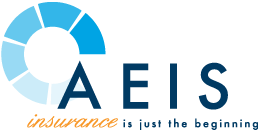When and How to Leave a PEO: Your PEO Transition Checklist
Written by: Ron Bland, GBDS

Navigating the decision to transition out of a Professional Employer Organization (PEO) can be a pivotal moment for any business. Whether you're experiencing growth that necessitates more direct control over your HR functions or seeking to reduce costs, knowing when and how to make this transition smoothly is crucial.
Why Consider a PEO Transition?
Headcount Growth and Changing Needs
Historically, one of the most common reasons for a PEO transition has to do with an organization that is outgrowing its original needs. Generally speaking, a PEO is really best for organizations with between five and 50 employees. As you get bigger than that, your needs begin to change and what was once a necessity might not make sense anymore.
Adverse Medical Benefits Renewals
A significant draw to PEOs is their ability to pool together many small-group clients in order to provide cost-effective medical benefits. Another common reason for a
PEO transition can be when the costs for your own group trend much higher than the rest of the “pool”. Be it because of several high-dollar medical claims or a drastic change in company demographics, your PEO benefits costs have the potential to increase shockingly fast year over year in ways that the standard small group insurance market does not.
Internal HR Team Expansion
If yours is a business in the process of expanding your internal human resources team, a PEO transition may be in order. Remember that the whole point of a PEO is to act as your outsourced HR department. If you start handling things like payroll, compliance, and benefits in-house, you don't need that PEO any longer.
Financial Considerations
Finally, for many organizations, one of the biggest reasons to transition away from a PEO has to do with the high costs that they're known for. Typically, you can expect to pay between $100 and $200 per employee per month for a PEO. After you grow past a certain point, this simply won't make much sense any longer.
Planning Your Transition Out of a PEO
Evaluating Cost-Benefit Analysis

One of the most important things to do is to get clarity about how much you're spending with your PEO by taking a closer look at all the expenses you have as they relate to your workforce. Include service fees, administrative charges, and the cost of benefits.
Compare the amount of money you're currently spending versus the amount you'll need to spend to take care of all these essential tasks in-house. At a certain point, the latter will be far more cost-effective than the former and, at that point, the time is right for a PEO transition. This becomes compounded if the cost for benefits under the PEO, which are initially low in order to help offset the administrative fees, also increase significantly.
Coordinating Transition Timing and Communication
Successfully transitioning away from a PEO will likely take several months of work, at a bare minimum. During this time, you need to have a strategy in place and a timeline to follow that makes sense for your business. This is the only way that you'll be able to gauge success in actionable terms and mitigate risk as much as possible.
You'll also want to stay in constant communication with employees during this time - especially since, at some point, you essentially have to re-hire them. Be prepared to answer any questions and address any concerns. Let people know what is happening when it's happening, and most importantly why.
Addressing Tax & Regulatory Compliance
Finally, you'll need to take care of your PEO transition from a tax and regulatory compliance perspective. Not only do you need to re-establish SUTA IDs, but you also need to re-establish local withholding accounts as well. Don't worry - the vendor that you've chosen to work with will likely be able to walk you through this process to avoid any potential issues that may arise.
You'll also need to build compliant LOA and PTO policies, create employee handbooks for each state, and take care of similar tasks.
We're here to help.
Contact us today.
Executing the Transition: Your PEO Transition Checklist
Implementing New Services and Tools
To help make sure that your PEO transition goes as smoothly as possible from the perspective of your employees, you'll need to implement new services and tools to help make things as straightforward as you can for them. Case in point: an employee benefits management portal. This will be a way that employees can see what their current status is, all while making any changes as necessary moving forward.
Upgrading IT Systems and Infrastructure
Once your PEO transition has been completed, your business (and more specifically, your HR department) will be responsible for meeting certain obligations that it may not have been in the past. This means that you need the base technology to support not only core functionality like payroll but also benefits and benefits administration as well.
Evaluating HRIS & Payroll Requirements
Executing your PEO transition will also involve hiring a new HRIS and payroll provider. After determining what your system requirements are, think about what your vendor partner needs to provide in terms of integrations, value, support, and other important factors.
Managing Benefits & Insurance Changes
Naturally, this period will be filled with changes in terms of what you can offer to your employees. You need to get this right, as again, this is a major part of what makes your company competitive in the first place.
Not only do you need to determine and address your needs in terms of things like traditional health insurance benefits, HSAs, FSAs, 401ks, and more, but you'll also have to account for elements like workers' compensation and COBRA administration (if necessary).
How a Benefits Advisor Can Help
When you partner with a benefits advisor like the team at AEIS, you get access to a wealth of experience that can help you enjoy all the advantages of a PEO transition with as few of the potential downsides as possible.
Not only can they help confirm that leaving your PEO makes financial sense for your business in the first place, but they also offer assistance in terms of addressing any operational gaps that exist once the PEO is gone, as well as putting together a timeline that makes sense for
exiting your PEO and beginning this new chapter in your organization's life.

Look for Assistance in Your PEO Transition
If you'd like to find out more information about how to make the most of your PEO transition, or if you have any additional questions you'd like to go over with someone in a bit more detail, please don't delay - contact the team at AEIS today.
About The Author:
Ronald L. Bland
President
Ron, a top insurance professional in the Bay Area since 1985, excels in creating cost-effective, comprehensive plans for business owners. His achievements include top-of-the-table status in the Million Dollar Round Table and speaking at the 2021 Top of the Table Conference. A Bay Area native, Ron graduated with honors from San Francisco State University and lives in San Mateo with his wife, Elaina, and their two children.




